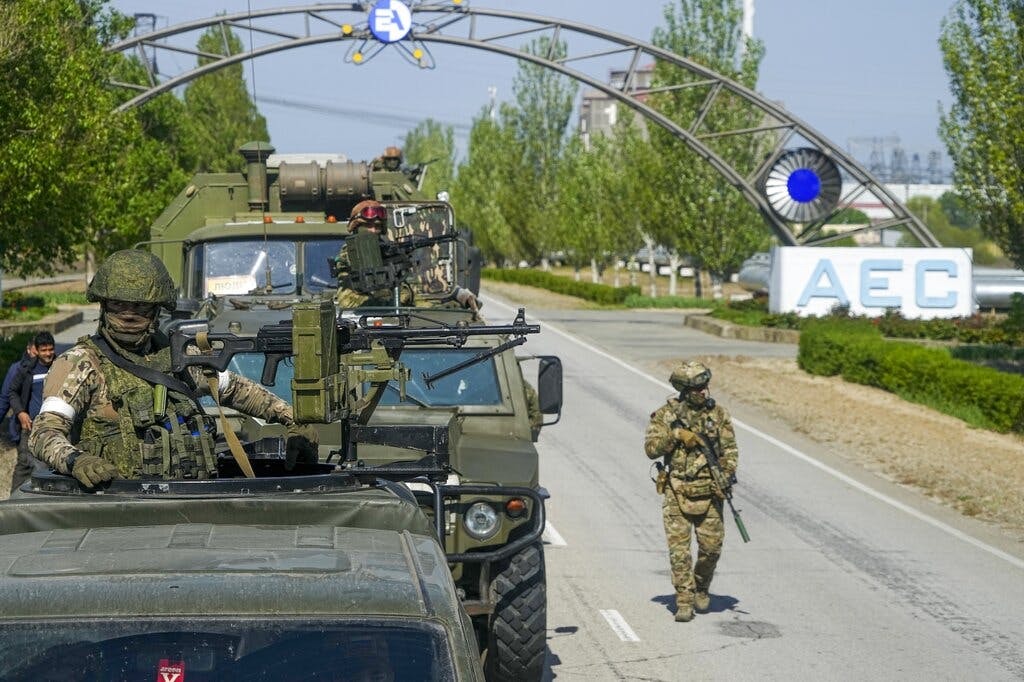Battle Could Loom Over ‘Atomic Pearl’ of Ukraine, With Nuclear Emergency a Danger
War wheels once more on Zaporizhzhya, site of largest nuclear power plant in Europe.

A nuclear power plant that figured in an earlier phase of the Ukraine war may soon become a flashpoint once more as the battle for control of the site heats up. The chances of triggering a nuclear emergency are heightened by the failure of the International Atomic Energy Agency to establish a security perimeter around the six reactors of the Zaporizhzhya plant in southern Ukraine.
As far back as August, Pope Francis — of all people — warned about the risk of a nuclear disaster at Zaporizhzhya. Russia and Ukraine were then accusing each other of firing near and at the facility. The danger today is exacerbated by the fact Zaporizhzhya is one of the four Ukrainian regions that Russia annexed illegally on September 30.
Yet unlike the city of Kherson, which was liberated late last year, the regional city of Melitopol remains under Russian occupation and the city of Zaporizhzhya is under constant Russian attack. The proximity of Russian forces to the nuclear plant in early March evoked memories of the 1986 Chernobyl disaster and led to fears of another nuclear meltdown.
With much of the spotlight on fighting in the fiercely contested eastern Donbas region, the fate of the Zaporizhzhya plant has receded from headlines. That would change were Ukraine to redouble its efforts to wrest back control of the power plant, which is the largest in Europe. The head of Ukraine’s nuclear utility Energoatom, Petro Kotin, has hinted that could happen soon.
In remarks to Bloomberg, Mr. Kotin said that the IAEA’s attempts to make a buffer zone were “not realistic.” He added that “our best hope is with the Ukrainian armed forces.” Retaking the plant would depend on Ukraine recapturing Melitopol, cutting Russ supply lines stretching 60 miles to the south. Then, Mr. Kotin reckons, “the only option” would be for “the occupiers to leave the plant.”
If Moscow launches a renewed offensive against Kyiv from the north or if Ukraine needs to pour more manpower into the battles at Donetsk and Luhansk, that could impinge on efforts around Melitopol. These are all unknowns. What is clear is that Zaporizhzhia has been a moneymaker for Moscow and according to Mr. Kotin it is “one of the legs this war stands on.”
Bloomberg reported that subsidiaries of the Russian state-owned nuclear giant Rosatom currently supply more than a fifth of the enriched uranium used in America and that millions of Europeans still rely on its nuclear fuel to generate electricity. Russia claimed full ownership over Zaporizhzhia in October and Rosatom’s chairman, Sergei Kiriyenko, is a deputy chief of staff at the Kremlin.
Mr. Kotin tells Bloomberg that “there should be sanctions against Rosatom until this war is finished.” Last month the IAEA chief, Rafael Mariano Grossi, said that the nuclear agency was “getting closer” to something that could be acceptable” on a security zone around Zaporizhzhia, but nothing material has transpired. The plant’s six reactors remain both shut down and largely unprotected.
At the outset of the new year Zaporizhzhya was part of an active and highly volatile war zone. On Thursday the Kyiv Independent reported that a Russian-installed member of the regional administration claimed there were explosions at Melitopol and that air defense systems had been activated. These may have been Ukrainian counterattacks.
Ukrainska Pravda reported that on January 2 Ukrainian forces killed up to 260 Russian soldiers around Melitopol and four other built-up areas of Zaporizhzhia. Moscow is doubtless aware that, even in the absence of a major counteroffensive, Kyiv is steadily chipping away at its hold on the illegally annexed region, the “atomic pearl” of Zaporizhzhia included.

